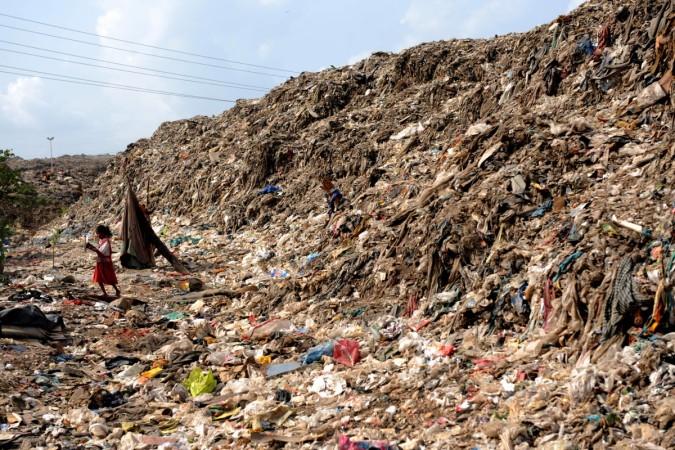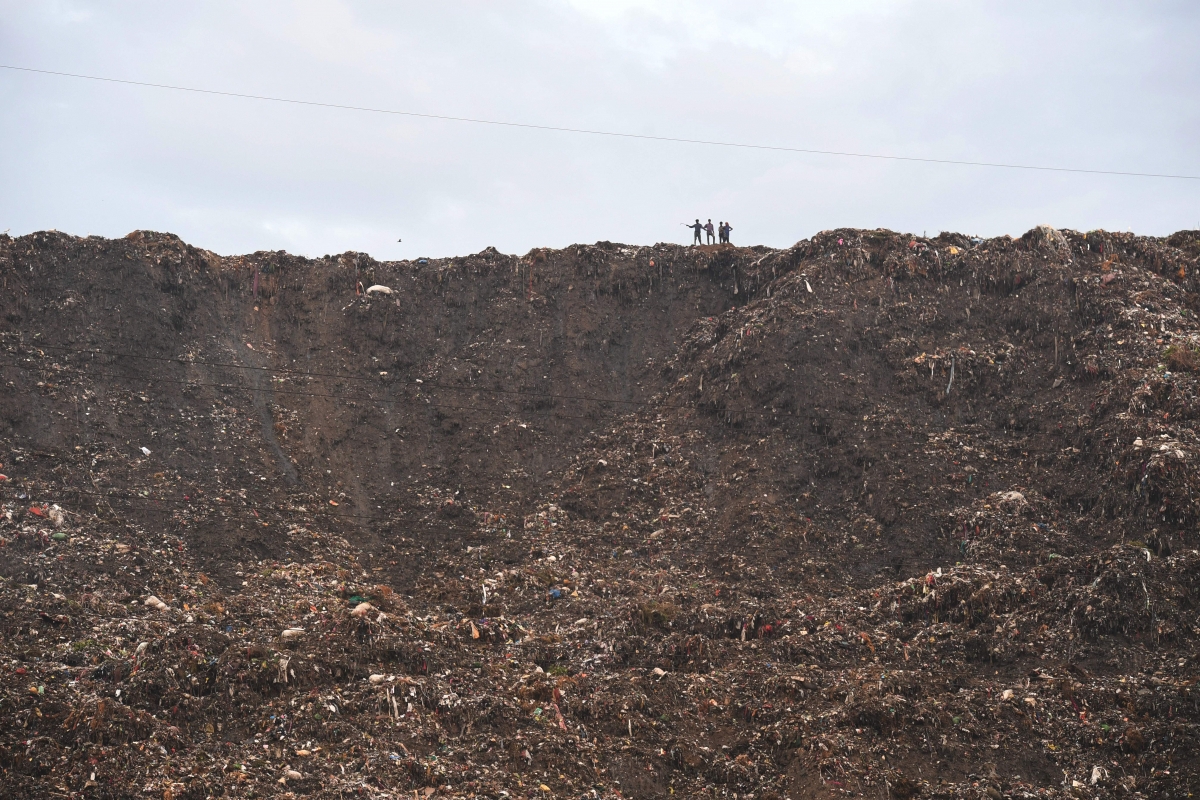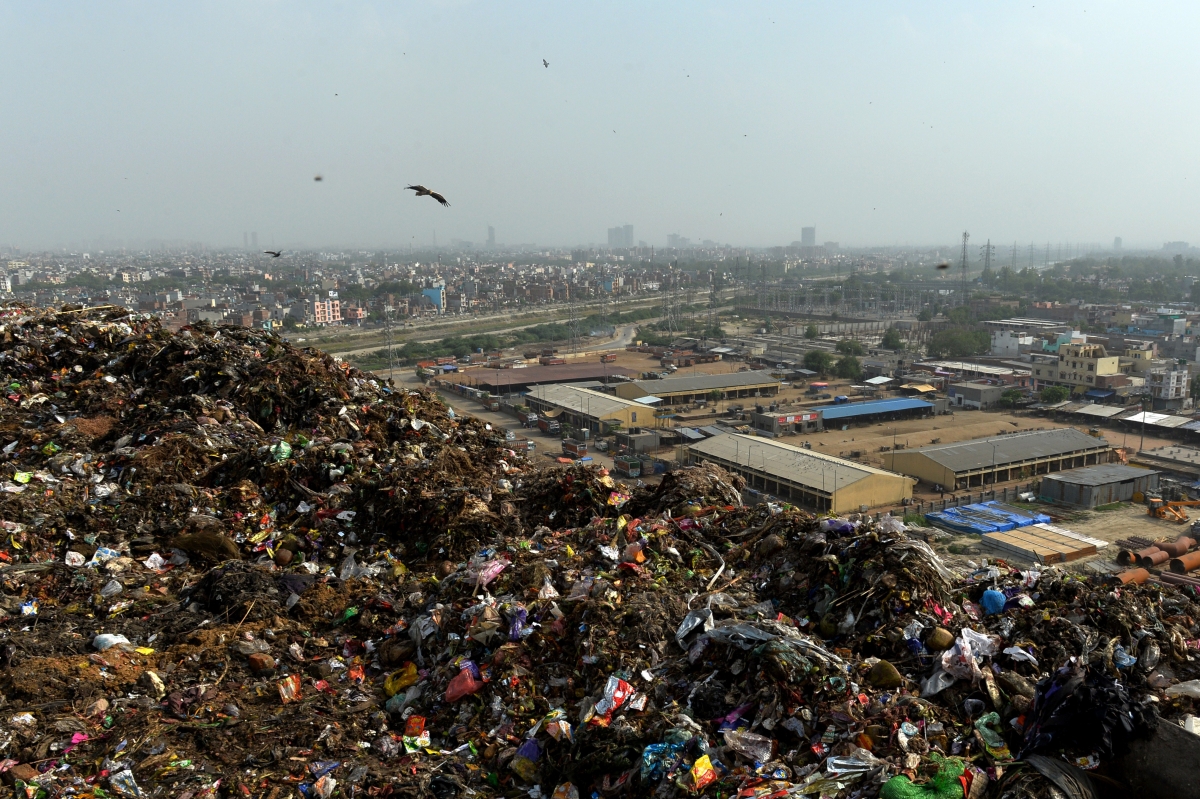At a time when Delhi's population continues to generate an extra 1.3 percent waste every year, the municipal corporation continues to stress on the need of at least 1,500 acres of land to dump its waste.
However, owing to shortage of land, the civic body has been dumping the city's waste in the Ghazipur landfill. As a result, the landfill which is spread across 70 acres and contains at least 12 million tonnes of waste, has reached a height of 65 metres.
In fact, the height of the landfill is only eight meters shorter than the Qutub Minar. The landfill is 45 metres higher than the prescribed limit of 20 metres.
"It is gaining height rather than losing because we have no alternatives to dispose of tonnes of garbage generated from east Delhi every day. Also, we are running under severe financial crisis and thus can't afford to invest in new projects," Hindustan Times quoted Pradeep Khandelwal, the chief engineer at EDMC's department of environmental management services as saying.
The EDMC officials are working toward acquiring new sites at Sonia Vihar and at Ghonda Gujran. But until that happens the Ghazipur landfill of east Delhi, which was started in 1984 and is also the oldest functional landfill in the city, will continue to receive 2,600-2,700 metric tonnes of garbage every day.
Here are a few of the largest garbage dumps in India:
- Deonar, Mumbai
Of the 60 million tons of waste that India generates every year, 2.7 million tons are generated by Mumbai. From the 7,000 to 8,000 tons of waste, nearly 5,500 tons is deposited at the 326-acre Deonar landfill -- the largest and oldest in Mumbai as it was set up in 1927. The dumping ground, which bears the toll of the excessive garbage dumping that is more than its capacity of 2,000 ton per day, is 30 metres high and saw two massive fires in early 2016. The presence of 12.7 million tons of combustible methane was a catalyst to the fire and the pictures of the thick smoke were picked by NASA satellites.

- Dhapa, Kolkata
The Dhapa Landfill in West Bengal, which is spread across 50 hectares, has been functional since 1980. The landfill has a functional compost plant that can process 500 metric tonnes of waste a day. Disposal rate exceeds 3000 million tonnes per day.

- Perungudi and Kodungaiyur, Chennai
Both Perungudi (228 acres) and Kodungaiyur (270 acres) are almost as tall as a two-storey building, but trucks still continue to bring in the city's unsegregated solid waste. With almost 900 rag pickers working at these dumping grounds, frequent fires have been reported. Residents living near the landfills often fall sick and complain of pollution.

- Mavallipura, Bangalore
The Mavallipura village is located at about 15 Kilometer away from Bangalore. About 100 acres of land in and around the village is used for dumping Bangalore's municipal waste by the Bruhat Bengaluru Mahanagara Palike (BBMP). Opened in 2007, the dumping ground can sustain about 500 tonnes of waste, but the BBMP has been sending almost 1,000 tonnes of garbage per day. The massive hillocks of waste is a threat to the lives of residents of the 12 nearby villages.

- Jawaharnagar, Hyderabad
The Jawaharnagar dump yard of Hyderabad is spread across a 100-acre land. Around 5,000 tonnes of waste including food waste in polythene bags and mixtures of dry and wet waste are dumped in thus landfill every day. The landfill gives rise to an unbearable stench, which is a major problem for the hundreds of family settled nearby. Toxic leachate from the landfill has also polluted three lakes called Dammaiguda Cheruvu, Nachan Cheruvu and Malkaram Cheruvu, which are located within four km radius of the dump yard.



















